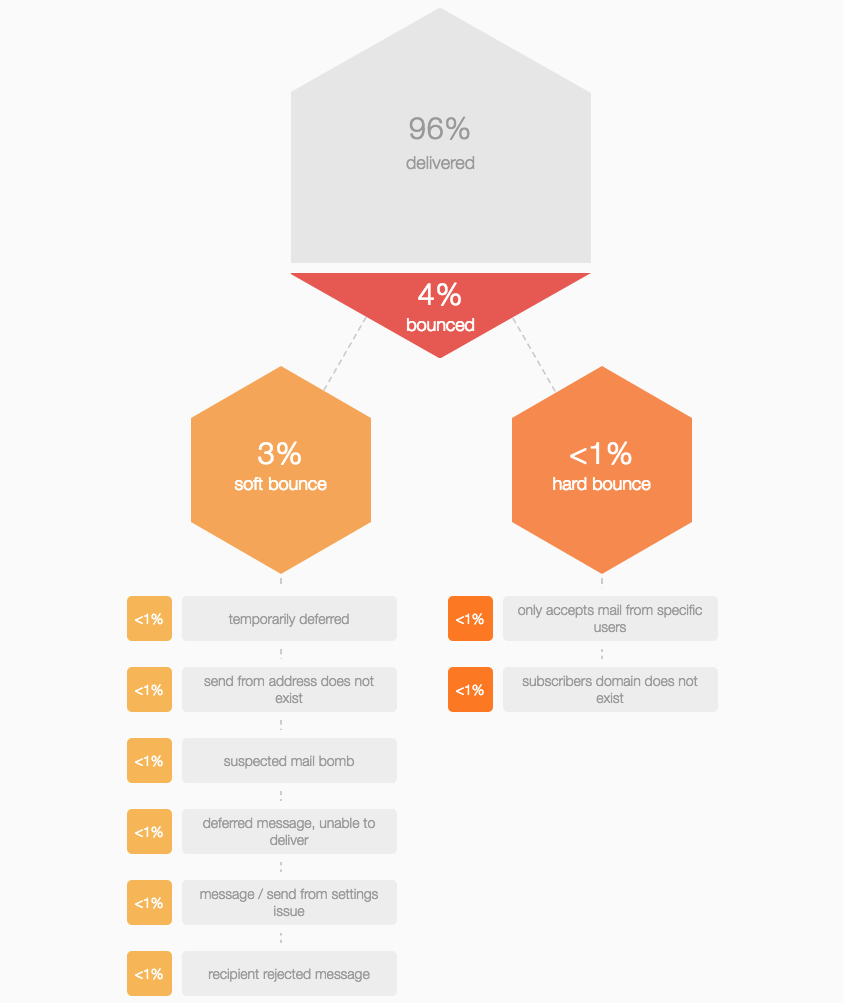When it comes to email marketing, bounces can be a fairly common occurrence. There are a vast array of reasons why an email may bounce – ranging from something simple such as a subscriber has moved jobs and as such their email account has been shut down, to your sending server not being setup correctly. Understanding and more importantly limiting the number of bounces that your email marketing campaign receives is crucial to your campaign’s overall success.
Bounces will occur inside your email database, however we also want to limit their occurrence. The obvious reason for this is that with a high bounce percentage, less of your subscribers will be receiving your email marketing. Higher levels of bounces will also impact your overall sending reputation, email service providers (ESP’s) will start looking at your future email marketing campaigns more negatively – either placing them into the spam folder or rejecting completely.
Understanding the exact reason why your email bounced to a specific subscriber can be a bit of a daunting task. Some email marketing service providers will simply show you an error code such as ‘5.5.4’, others may not show the error code, perhaps only telling you that the email bounced, or soft bounced for example. If you are new to email marketing, understanding the different types of email bounces can be a bit of a daunting task – but a task that cannot be ignored, as mentioned higher levels of bounces will impact the delivery for all of your subscribers.
So, lets try and demystify the complex subject of email bounces.
Understanding the reason why your email bounced.
When getting started with email marketing, you are likely to hear two buzz phrases “Soft Bounce” and “hard Bounce”.
Soft bounce.
As a rule of thumb, a soft bounce is normally a temporary issue. For example, your subscribers mailbox may have been full at the time of sending, so there was no room to store your incoming email. By the time that you send your next email campaign, you would expect that your subscriber has deleted some old emails to free up some space for your next incoming mail.
Hard bounce.
A hard bounce is normally defined as a permanent error. The email send failed and is likely to fail when you try again. A rudimentary example might be that your subscriber has moved jobs, as such their email account has been shut down. So if you try sending to this subscriber next week, the email is likely to bounce still.
Explaining Hard and Soft Bounces.
Understanding email bounces does not end with just a simple categorisation of Hard and Soft Bounces. In most scenarios your recipients email server will let you know the exact reason why the email Hard Bounced for example. Email servers will soften respond with a status code, such as “5.5.1”, but understanding what this error code means can an involved task – there is a huge range of error codes that recipient email servers will respond with.
Over the last few months at email blaster, we have been working to bring a little more transparency to your email marketing bounces. We have been writing an algorithm to turn those confusing bounce codes into something a little more human friendly.
An email bounce of 5.5.1 normally means that the subscribers mailbox does not exist anymore, but how are we all supposed to know that?
In response, today we are pleased to announce the new upgrades to your email marketing analytics bounce reporting area. Using our new algorithms, we are able to accurately categories every major email bounce that you may encounter – from 5.5.1 to 57606, we have been working hard to put a little more human touch to your email marketing. The new upgrades quickly categorise every bounce, giving you an easy to understand explanation of why your email bounced. For a full definition of email marketing bounces, we have also put together a dedicated page which covers the most common bounce causes.
The upgrades to your analytics bounce area are now live for everyone. As a sneak peak, we have included a quick screen of what you can expect to see:

Find our email marketing software services now.


